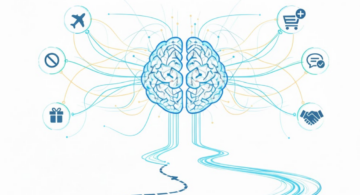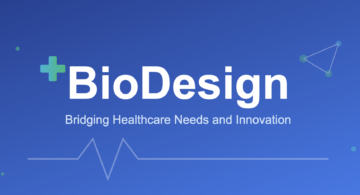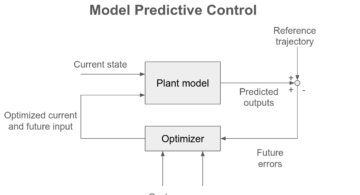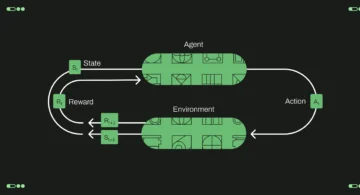Web
From Blockchain to Web3: Building the Internet of the Future
Chen QIU
Blockchain technology has become widespread since the advent of Bitcoin, penetrating deeply into various aspects of our daily lives. For example, in the financial sector, cryptocurrency transactions have allowed millions of users worldwide to experience the convenience and low cost of borderless transfers; in supply chain management, large corporations like Walmart are using blockchain to track every step of food from farm to table, ensuring safety and traceability; moreover, in the art world, blockchain through Non-Fungible Tokens (NFTs) provides artists and collectors with a new way of digital ownership verification. These examples demonstrate that blockchain technology is not just a distant concept but is actively shaping our economic and social structures. Given such technological innovations, how should we transition from blockchain technology to the broader world of Web3 to foster a more decentralized and user-driven internet environment?
Blockchain Fundamentals
Blockchain is a revolutionary technology characterized by its decentralization, transparency, and immutability. In blockchain, decentralization is achieved as each node on the network maintains a complete copy of the data, meaning there is no single central authority controlling the entire system. Transparency is reflected in that all transaction records are openly visible to participants in the network, while immutability ensures that once data is recorded in a block, it cannot be altered or deleted.

A key aspect of blockchain is its consensus mechanism, which is the process by which all nodes in the network agree to verify and record transactions. The most common consensus mechanisms include Proof of Work (PoW) and Proof of Stake (PoS). In PoW, as used by Bitcoin, nodes must solve complex computational problems to earn the right to record transactions, a process known as mining. In PoS, as Ethereum is planning to adopt, nodes are selected to create new blocks based on the amount of currency they hold and the length of time they have held it.
In the blockchain, each transaction is first sent to the network, then collected by nodes and assembled into blocks of transactions. Through the consensus mechanism, these transaction blocks are verified before being added to the existing blockchain. Once a block is accepted by the network, it is permanently added to the blockchain, and the corresponding transactions are considered confirmed.
This foundational technology underpins blockchain applications like Bitcoin and Ethereum. Bitcoin primarily functions as a digital currency, while Ethereum allows developers to build complex decentralized applications through its smart contract platform, demonstrating the extensive applications and vast potential of blockchain technology in various scenarios.
From Web1.0 to Web3: The Evolution of the Digital Revolution
The internet has evolved from Web1.0 to Web3.0, showcasing a profound shift from static information display to a decentralized digital economy. This transformation is not just a technological innovation but a fundamental change in user interaction and data ownership, impacting global economic and social structures.
Web1.0: The Era of Static Information
During the Web1.0 era, the internet primarily served as a platform for browsing information, with content controlled by centralized, large institutions like Yahoo and Sina. This content was mostly static, and user interaction was extremely limited. For example, websites like Wikipedia allowed users to access a vast amount of information, but users could not edit or contribute to that content. This stage of the internet was described as a “read-only” platform where users were mainly receivers of information.
Web2.0: The Golden Age of User Participation
With technological advancements, the Web2.0 era emerged, marking a transition where users went from passive recipients to co-creators of content. Social media platforms such as Facebook, Twitter, and YouTube encouraged users to generate their own content and share it with others. This era’s defining feature was “readable and writable,” where users could not only consume information but also create it, significantly enhancing interactivity and personal expression freedom. For instance, Google, through its extensive services like Blogger and Google Docs, supported user-generated content creation and sharing, thus changing the way information circulated.
Web3: The Decentralized Digital Revolution
Web3.0 represents the future of the internet, emphasizing decentralization, user data sovereignty, and blockchain technology. This era is not just about technological progress but also a shift in societal and cultural norms. Blockchain platforms like Ethereum, Cardano, and Polkadot support smart contracts and decentralized applications (DApps), enabling users to transact and interact without centralized intermediaries. For example, through blockchain-based applications, users can directly own and control their digital identities and assets, instead of them being controlled by large corporations like Facebook.
This evolution from Web1.0 to Web3.0 not only showcases technological development but also reflects a global reassessment of data privacy, economic power, and personal autonomy. In this process, the combination of large international companies and emerging technologies is driving us toward a more open, fairer, and transparent digital future.
Harnessing Blockchain for the Web3 Revolution
The integration of Web3 with blockchain technology marks a pivotal shift in how digital identities and assets are managed across the internet. This revolution is defined by the decentralization that blockchain inherently provides, establishing a robust foundation that enhances data integrity and security across various platforms. This seamless integration not only addresses longstanding challenges such as data silos and interoperability among different websites but also significantly enhances the user experience in the digital realm.
Empowering Users: Enhanced Control Over Data and Privacy
In the era of Web3, blockchain technology significantly enhances user empowerment, allowing individuals to directly control their own data and privacy without depending on third-party service providers. Through digital wallets, users possess their identity credentials and assets, meaning the storage and processing of personal information are entirely under their control. This model not only improves data security but also empowers users to manage their personal information autonomously, fostering a sense of ownership and control that was previously difficult to achieve in centralized systems.
Eliminating the Need for Third-Party Intermediaries in Transactions
One of the fundamental advantages of blockchain technology is its ability to operate without the need for traditional intermediaries, such as banks or online marketplaces. Transactions and interactions within the Web3 framework are facilitated by smart contracts, which execute automatically without any intermediary involvement. This reduces transaction costs, speeds up processing, and lowers the risk of fraud. Users can engage directly with each other, enabling true peer-to-peer interactions that are more efficient and transparent.
Censorship Resistance Through Decentralization
The decentralized nature of Web3 provides robust resistance against censorship. Unlike centralized networks, where data can be easily monitored, censored, or removed by service providers or governmental bodies, blockchain distributes data across thousands of nodes worldwide. Modifying or deleting information that has been confirmed by the network is nearly impossible, which significantly enhances the permanence and resilience of information against interference.
Technology-Driven Innovations
The core of Web3 technology lies in smart contracts, self-executing contracts with the terms directly written into lines of code. These contracts eliminate the need for intermediaries, thereby reducing potential disputes and enhancing transaction efficiency. Smart contracts are instrumental in powering decentralized applications (DApps), which provide a wide array of services from financial tools to social platforms without centralized control, ensuring that interactions are secure and autonomous.
Decentralized Autonomous Organizations (DAOs) further exemplify the democratic ethos of Web3, where governance is managed by its members without centralized leadership. Through smart contracts, every operational decision within a DAO is made via proposals and voting, ensuring transparency and equitable participation among all members. This model not only fosters collective decision-making but also distributes power evenly, preventing any single entity from having disproportionate influence.
A More Connected and User-Centric Digital Future
The move toward a decentralized web, powered by blockchain, significantly enhances user control over personal data and broadens access to a more interconnected digital world. The integration of smart contracts, DApps, and DAOs reshapes how digital interactions and governance are structured, promoting greater autonomy and collective empowerment. With these advancements, the potential for innovation in digital identity, asset management, and user interaction is boundless, promising a future where the internet is more integrated, transparent, and user-centric.


 2025/12/12
2025/12/12 2025/12/07
2025/12/07 2025/11/06
2025/11/06 2025/10/31
2025/10/31 2025/10/24
2025/10/24 2025/10/03
2025/10/03 2025/08/30
2025/08/30 2025/08/22
2025/08/22